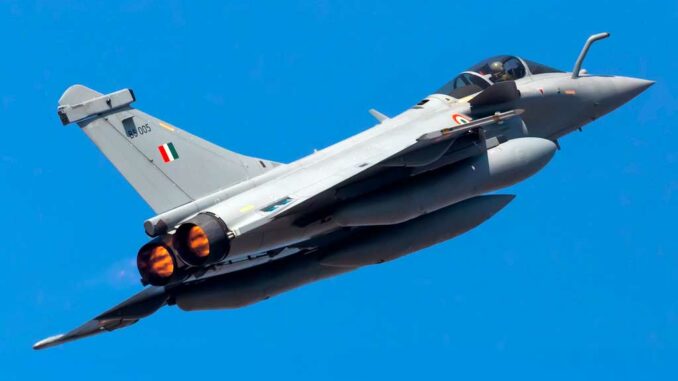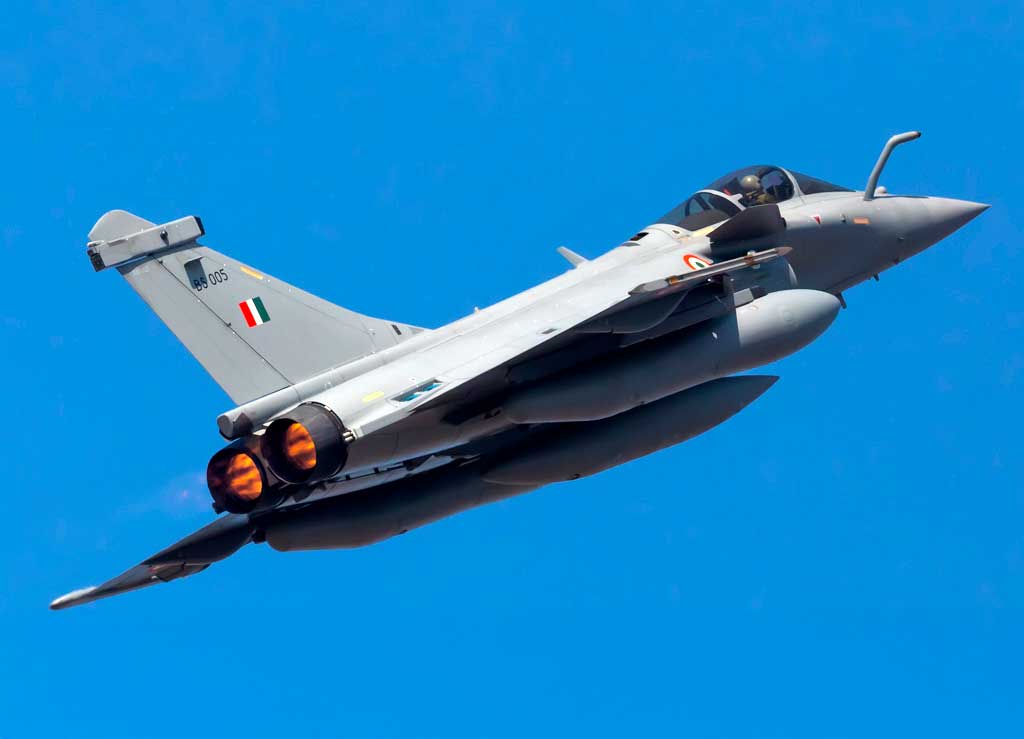
The CEO of Dassault Aviation denies the loss of Rafale aircraft in combat, disputes Pakistani allegations, and defends the fighter jet’s versatility.
A controversy between strategic communication and information warfare
On June 15, 2025, a few days before the Paris Air Show, Eric Trappier, CEO of Dassault Aviation, held a press conference to clarify the accusations made by the Pakistani army. According to a statement released two weeks earlier by Rawalpindi, three Indian Dassault Rafale jets were shot down during Operation Sindoor, a series of air engagements reported over Kashmir the previous month. This claim, widely reported by some regional media outlets and digital propaganda channels, was quickly disputed by New Delhi, then by Dassault itself.
Eric Trappier described the allegations as “inaccurate and unfounded”, pointing out that no Indian Rafale fighter jets had been lost in combat during the operation. However, he did admit the loss of one aircraft, without enemy contact, due to a technical failure at high altitude, which is now under investigation. This position is intended to contain speculation while maintaining the operational image of the Rafale, which has been deployed in several areas of tension since its introduction in India in 2020.
At the same time, Trappier compared the Rafale’s performance to that of the F-22 Raptor and F-35A Lightning II, highlighting real differences but also specific functional advantages of the French fighter. The statement is part of a targeted commercial and diplomatic strategy, at a time when Dassault is actively defending its export positions.

A disputed claim: no Rafale aircraft shot down in combat, according to Dassault
A clarification in response to official accusations by Pakistan
In early June, the Pakistani Ministry of Defense claimed that the Indian Air Force had lost three Rafale fighter jets during unconfirmed clashes in northern Ladakh as part of Operation Sindoor. Although not officially recognized by India, the operation reportedly involved several Indian and Pakistani aircraft over a disputed area near Skardu. Pakistani authorities reported successful launches of PL-15 missiles and the interception of several deep intrusions.
In response, the Indian Ministry of Defense denied any combat losses, acknowledging only the loss of a Rafale aircraft in non-hostile conditions. The incident reportedly occurred at an altitude of over 12,000 meters during an extended training mission, with no enemy involvement or hostile radar contact.
Eric Trappier’s statement ahead of the Paris Air Show was intended to frame this communication from a technical perspective, formally refuting the idea of an operational failure. He specified that Spectra electronic warfare systems had not recorded any hostile engagement during the time slot in question. Furthermore, the friend/foe identification systems and flight logs transmitted to Dassault showed no losses in actual combat.
Trappier referred to a deliberate disinformation strategy aimed at undermining the credibility of the Rafale at a time when several competitions are underway, notably in Colombia, Serbia, and Malaysia. He also pointed out that Dassault has never concealed the operational losses of its aircraft, as documented by feedback from French forces in the Sahel.
A technical comparison with the F-22 and F-35
Differences in doctrine, mission and modularity
Taking advantage of this media opportunity, Eric Trappier deliberately broadened the debate by addressing the position of the Rafale vis-à-vis the two fifth-generation American aircraft. He acknowledged without hesitation that the F-22 Raptor has an advantage in passive stealth and high-altitude combat capability. It is a pure fighter aircraft, designed for long-range air-to-air engagements with an architecture dedicated to air superiority.
However, he insisted that the Dassault Rafale, despite its earlier generation positioning, retains a tactical advantage in mixed and multi-theater scenarios. Unlike the Raptor, the Rafale can switch from air-to-air engagement to ground support or strategic reconnaissance missions without reconfiguration. It comes standard with OSF optoelectronic sensors, an AESA RBE2 radar, a Reco NG pod, and the Spectra system, which provides active and passive electronic protection for the aircraft.
As for the F-35, Trappier was keen to point out that despite its increased stealth capabilities, this aircraft remains dependent on its connectivity to an advanced C2 network, which makes it vulnerable in a jammed environment. He emphasized that in recent engagements, particularly in Syria, the Rafale had operated autonomously, without US electronic warfare relays or constant AWACS support.
Finally, he pointed out that the total cost of an American F-35A now exceeds €220 million over its entire life cycle, compared to €150 million for a Rafale F4. These figures include the purchase price, maintenance, infrastructure, and compatible ammunition.

An image issue for Dassault in a tense commercial context
Maintaining operational credibility at the heart of exports
Since 2020, the Rafale fighter jet has established itself as one of Dassault’s most exported platforms. It has been ordered by India, Egypt, Qatar, Greece, the United Arab Emirates, Croatia, and Indonesia, totaling more than 290 units sold outside France. Any potential loss is therefore immediately exploited politically, in the media, and commercially.
Pakistan’s allegations come at a strategic moment. Dassault is currently defending its bid for the Indian MRFA program (114 aircraft), as well as active bids in Saudi Arabia, Colombia, and Bangladesh. A perception of vulnerability or inefficiency could weaken these bids, even in the absence of objective data.
Eric Trappier’s public intervention is part of a desire to regain the narrative, positioning Dassault as a credible, transparent player capable of responding to the substance of the allegations. The strategy is based on technical discourse, empirical data and performance verified in real-world conditions.
Dassault knows that flight tests of the Rafale fighter jet, as experienced by the Indian and Emirati forces, remain its best marketing argument. This is provided that public perception can be controlled, particularly in the face of influence campaigns orchestrated by competing states.
War Wings Daily is an independant magazine.